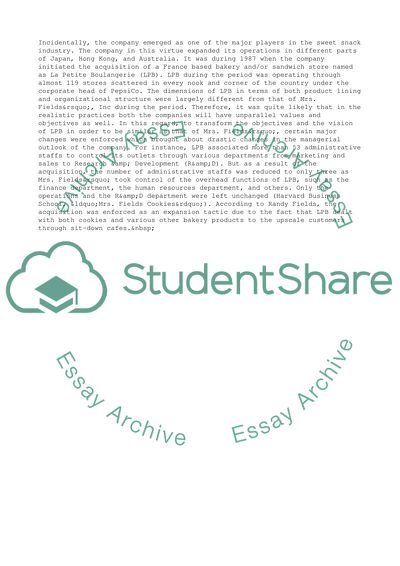Cite this document
(Mrs Fields Original Cookies Case Study Example | Topics and Well Written Essays - 2000 words - 1, n.d.)
Mrs Fields Original Cookies Case Study Example | Topics and Well Written Essays - 2000 words - 1. Retrieved from https://studentshare.org/business/1748501-mrs-fields-cookies
Mrs Fields Original Cookies Case Study Example | Topics and Well Written Essays - 2000 words - 1. Retrieved from https://studentshare.org/business/1748501-mrs-fields-cookies
(Mrs Fields Original Cookies Case Study Example | Topics and Well Written Essays - 2000 Words - 1)
Mrs Fields Original Cookies Case Study Example | Topics and Well Written Essays - 2000 Words - 1. https://studentshare.org/business/1748501-mrs-fields-cookies.
Mrs Fields Original Cookies Case Study Example | Topics and Well Written Essays - 2000 Words - 1. https://studentshare.org/business/1748501-mrs-fields-cookies.
“Mrs Fields Original Cookies Case Study Example | Topics and Well Written Essays - 2000 Words - 1”, n.d. https://studentshare.org/business/1748501-mrs-fields-cookies.


